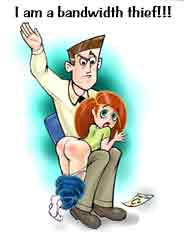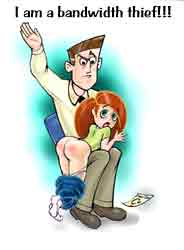|
Alex McDowell got his first job in Hollywood as a production
designer in the early '90s. In just over a decade, he has
worked with such directors including Steven Spielberg, David
Fincher, Terry Gilliam and Alex Proyas. His. Keri Allan talked
to the former commercial and music video production designer,
about this role as production designer on Minority Report...
Keri
Allan: What stage you got involved with Minority Report?
Alex
McDowell: Pretty much at the beginning of Steven Spielberg's
involvement. The film had been around for quite a while with
different directors at Fox, but once Steven got involved he
hired Scott Frank, the writer, and myself more or less at
the same time. So I was on for about 10 months and then he
shut down to do A.I. and then we stopped and I went
to do another film, and then came back and started again,
did another 10 months prep and then the shoot.
KA:
What did your work involve?
 |
AM:
The production designer is kind of responsible for the look
for the film, and the frame of the film so my process is to
start off showing the director - in this case after a conversation
with Steven I had to show him a lot of visual references -
magazines and books and pictures to get an idea of direction,
and then start moving into conceptual art. I hired about six
Photoshop artists who were working on conceptualising the
ideas as the script, or notes from the script, started coming
in. And then, as things started getting solidified, we'd start
set designers and art directors working on actually making
the drawings of designs for the sets. And then, as those starting
getting solidified, we would start to bring in construction
team and set decorators and start looking for locations. I
am kind of responsible for all of that and then prop design
and researching - in the case of Minority Report that
meant all the technology and futuristic elements of the way
technology and society might develop.
We
did a lot of research by talking to scientists and futurists
about what they thought would happen in the future. We had
to work within the parameters of what Spielberg wanted - a
utopian kind of non-post apocalyptic, a good clean future
where ecology is in place and on the surface appears to be
a kind of healthy, functioning development of the society
we live in now.
KA:
Where there already ideas for the look of the movie in the
script or did these come mainly from Spielberg?
AM:
I think it was a combination, but on the whole with the visual
effects side of things Steven had a clear idea. He had a lot
of ideas he wanted to develop, some of those things ended
up going into A.I. We developed a sleeping environment
where the cover of the bed would close down and you could
programme your environment to be, for example, a forest. Then
it would feel like you were sleeping in a forest. This idea
ended up being used in A.I. Spielberg is very interesting
as he is constantly coming up with ideas. In absence of a
script, which is how we started, we just developed a lot of
ideas in the abstract, to see where we could take them and
then present them back to Steven and see if he would like
them.
Out
of that the Maglev
transportation design was developed. We knew that there would
always be pre-cogs in the film so at a very early stage we
started working on the pre-cogs. Steven liked the direction,
he liked the fact that there were three of them, and once
we set up the design that they were laying head to head in
that sort of Mercedes symbol, he wanted to develop that as
the pre-crime logo, and then we kind of went in a very straight
line in the way we developed some of those designs, so we
kind of knew -pre-crime design we kind of knew about very
early on, that sort-of sophisticated it as the film went along,
made it smaller more compact, more shootable, but overall
those pre-cog pre-crime designs were pretty much in place
in the beginning.
 |
Because
there wasn't a script at first we started off by looking at
the world as a whole and asking ourselves what would the world
look like in Washington DC something like 2040? The art department
came up with things like what the architecture was like, the
way that the environment around the city would develop, what
the cars would look like. They also started looking into what
watches and communication devices would look like, what the
computers would look like and how they'd work. As the script
came in we were able to narrow things down more and more and
we were able to get more and more specific about the day to
day life of Anderton. My approach is not to separate the production
design and the visual effects design, at least at the beginning
I start conceptualising the film as a whole. Then as the visual
effects come in, we try and give them conceptualisation of
the film as we see it.
Sometimes
it doesn't really all come together until we've started filming,
so there's a long part of the design process where we're talking
about the design as a whole, and collaborating with all of
the various departments to see what's the best and most sufficient
way of getting the design onto the screen.
KA:
Was there a limit on how much CGI you could use, or did it
depend on the scene?
AM:
I think it was completely depended on what the script needed
in the end. Certainly there's always a limit, Steven is very
clear about how much money he wants to spend on a film. But
in order to get to that point where you know how much something's
going to cost you have to develop the design to a certain
point in order to see whether he likes it to see how much
screen time he wants. With CG a lot of the time we are trying
to make the number of shots more efficient in order to keep
an idea in the film. Then you need to work out how important
the effect is in the story. Originally we developed a moving
walkway systems where Tom Cruise was escaping from the cops
but in the end Steven decided it was going to cost too much
money, in comparison to how much value it had to the story,
so we cut it down to just one little walkthrough.
KA:
Do you have a favourite effect?
AM:
I think that one of the most successful ones was the hall
of containment where he goes to find the Ann Lively murderer,
he goes out on the moving walkway out onto the middle of the
set and all of those pre-criminals come out of the ground
in their vertical tubes and I think that that was something
that was visualised completely in the computer. It was done
very specifically to the number of shots Steven wanted and
then step by step we built some of those tubes for real. While
some of them moved most of them were visual effects. The images
that were playing on their screens were a whole other layer
and I think that whole sequence came out exactly as everyone
wanted it to and was really successful.
KA:
Any shots that were problematic?
AM:
The car factory set was a hard one to do. We were going to
do a big set extension for that in CG but in the end we didn't.
I think the only CGI work in that scene was the laser beams
in the end.
The
one scene that I thought was seamless, and I'm not sure how
many people knew it was shot in a complete CG environment,
was the ending on the rooftop. That set was built on stage
and the entire background was a CG element and that was really
seamless I thought they did a fantastic job there.
KA:
Thank you for your time.

Minority
Report is out to buy now from 20th Century Fox Home Entertainment
(£24.99 DVD & £16.99 Video)
Return
to...

|